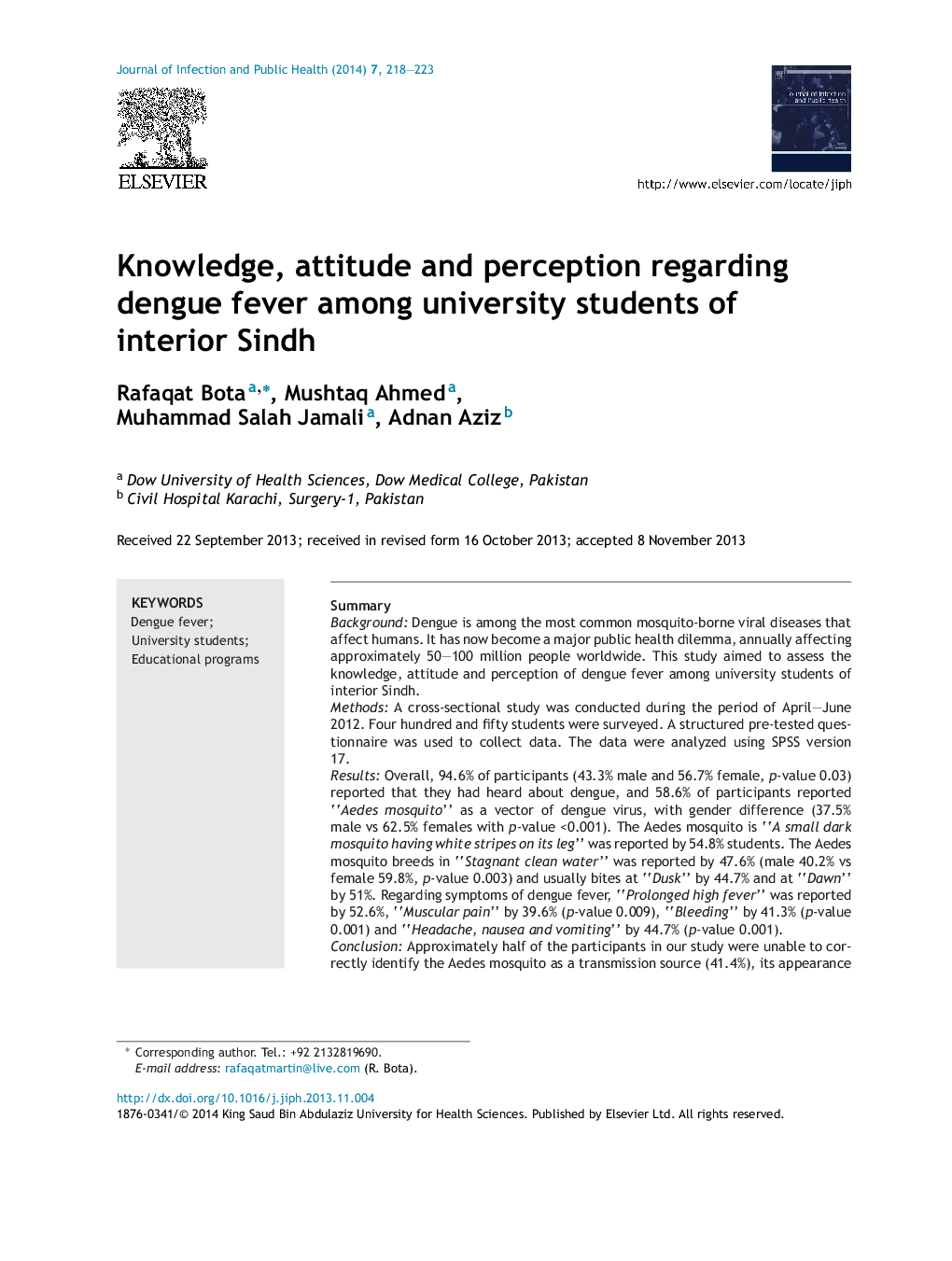| Article ID | Journal | Published Year | Pages | File Type |
|---|---|---|---|---|
| 3405944 | Journal of Infection and Public Health | 2014 | 6 Pages |
SummaryBackgroundDengue is among the most common mosquito-borne viral diseases that affect humans. It has now become a major public health dilemma, annually affecting approximately 50–100 million people worldwide. This study aimed to assess the knowledge, attitude and perception of dengue fever among university students of interior Sindh.MethodsA cross-sectional study was conducted during the period of April–June 2012. Four hundred and fifty students were surveyed. A structured pre-tested questionnaire was used to collect data. The data were analyzed using SPSS version 17.ResultsOverall, 94.6% of participants (43.3% male and 56.7% female, p-value 0.03) reported that they had heard about dengue, and 58.6% of participants reported “Aedes mosquito” as a vector of dengue virus, with gender difference (37.5% male vs 62.5% females with p-value <0.001). The Aedes mosquito is “A small dark mosquito having white stripes on its leg” was reported by 54.8% students. The Aedes mosquito breeds in “Stagnant clean water” was reported by 47.6% (male 40.2% vs female 59.8%, p-value 0.003) and usually bites at “Dusk” by 44.7% and at “Dawn” by 51%. Regarding symptoms of dengue fever, “Prolonged high fever” was reported by 52.6%, “Muscular pain” by 39.6% (p-value 0.009), “Bleeding” by 41.3% (p-value 0.001) and “Headache, nausea and vomiting” by 44.7% (p-value 0.001).ConclusionApproximately half of the participants in our study were unable to correctly identify the Aedes mosquito as a transmission source (41.4%), its appearance (45.2%), its breeding place (52.4%) and its bite time (52.2%). The enhancement of knowledge through different educational programs is needed to increase awareness of dengue fever.
